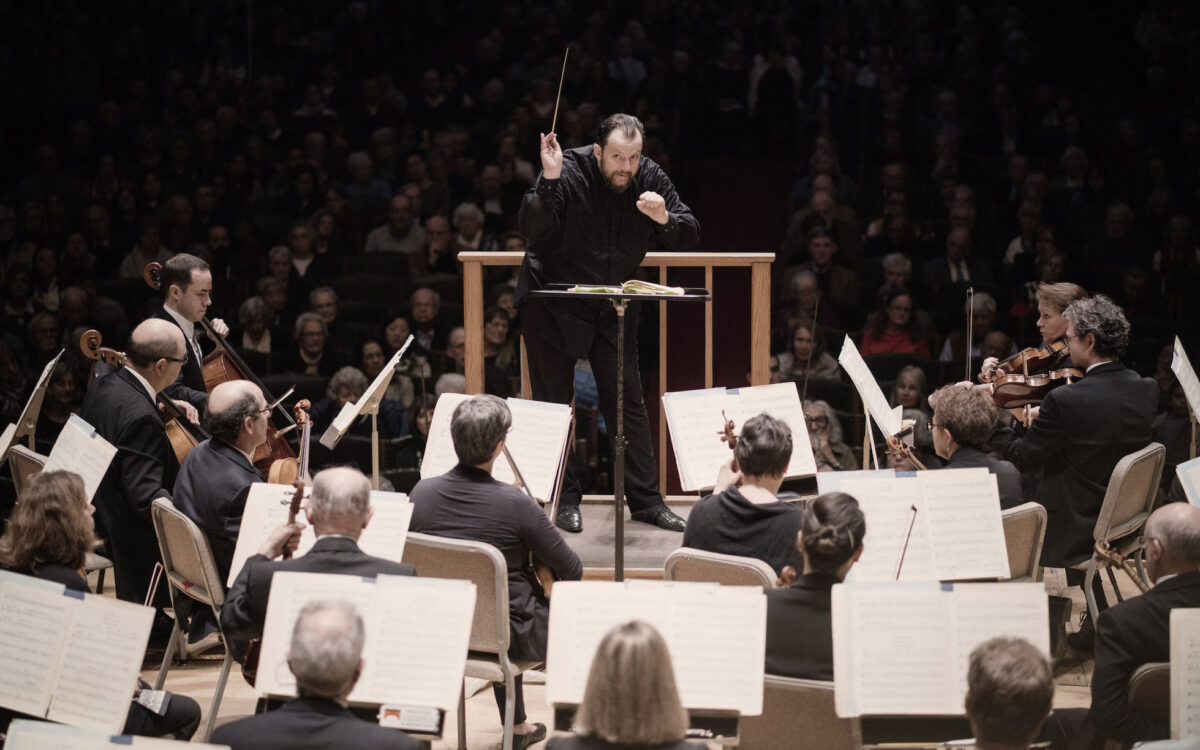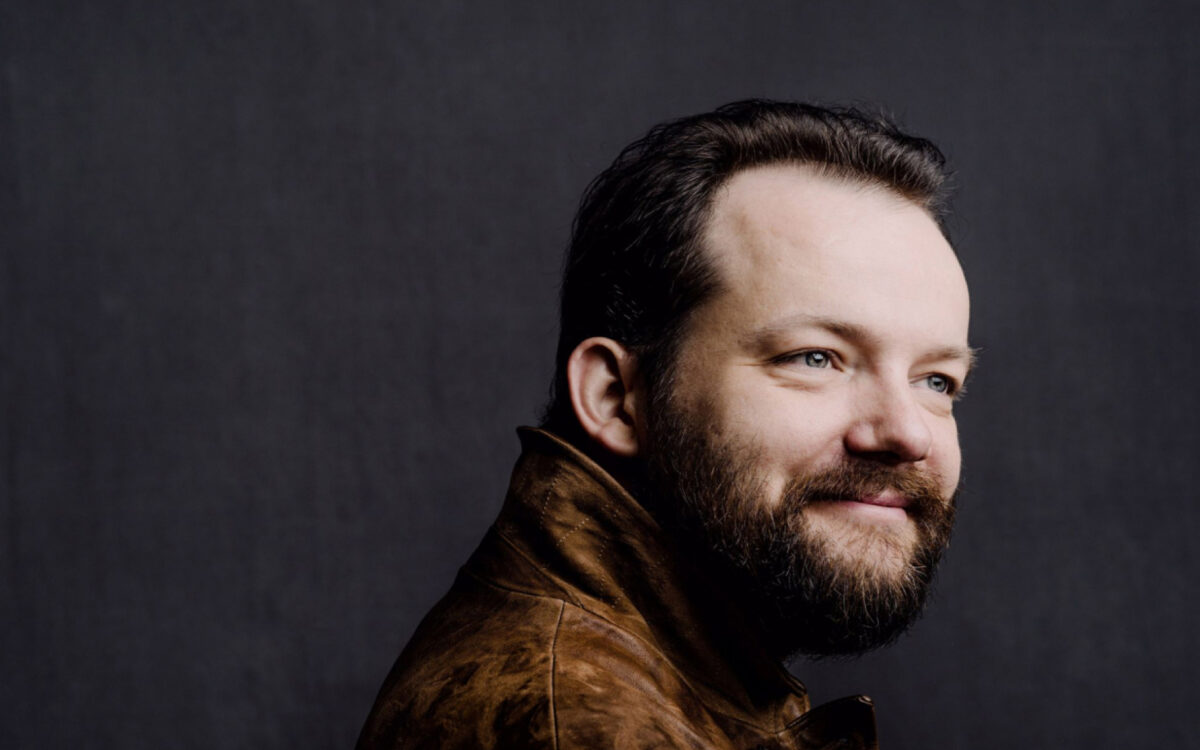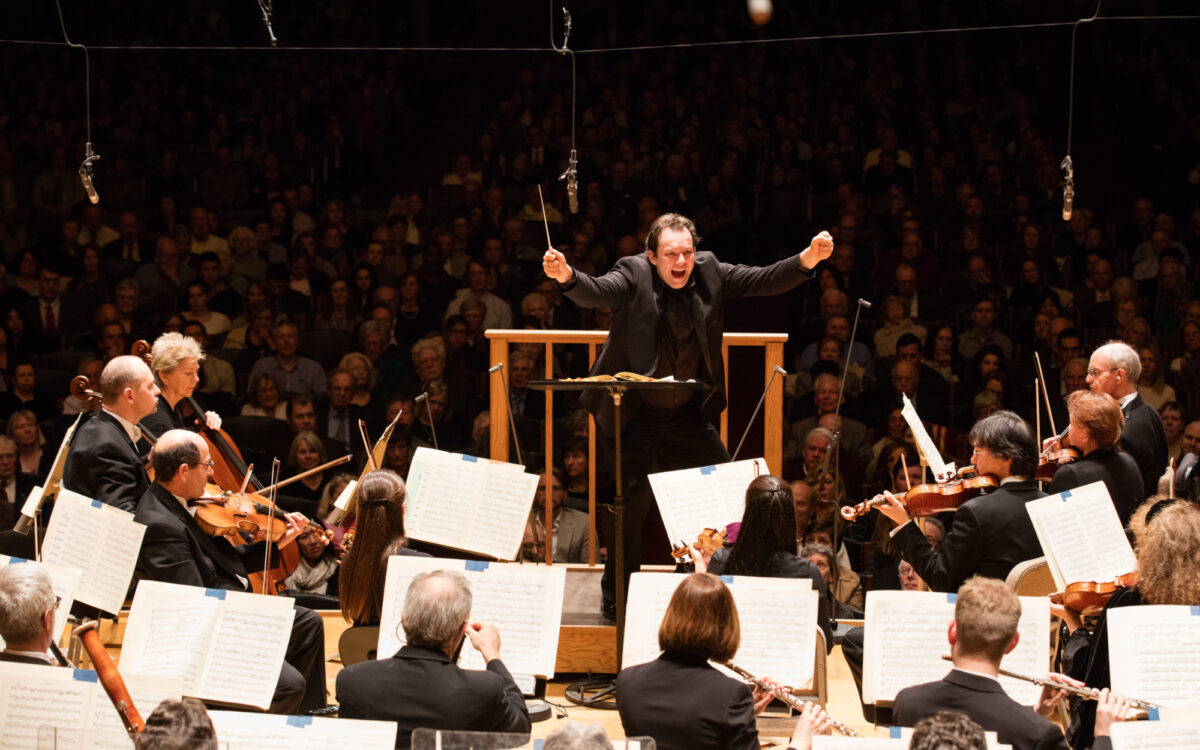Symphonic Fantasy on Die Frau ohne Schatten
Quick Facts
- Composer’s life: Born June 11, 1864, in Munich, Germany; died September 8, 1949, in Garmisch-Partenkirchen, Bavaria, Germany
- Year completed: 1947
- First performance: June 26, 1947, in Vienna, Karl Böhm conducting
- First BSO performance: October 14, 2021, Andris Nelsons conducting
- Approximate duration: 20 minutes
The opera Die Frau ohne Schatten (“The Woman Without a Shadow”), one of Richard Strauss’s collaborations with the writer Hugo von Hofmannsthal, was premiered by the Vienna State Opera on October 10, 1919, Franz Schalk conducting. While living in Switzerland after World War II Strauss created a single-movement Symphonic Fantasy using themes from the opera; this was premiered in Vienna under Karl Böhm’s direction on June 26, 1947.
The score of the Symphonic Fantasy on Die Frau ohne Schatten calls for 4 flutes (3rd and 4th doubling piccolo), 2 oboes, English horn, 3 clarinets, basset horn, bass clarinet, 3 bassoons, contrabassoon, 4 horns, 3 trumpets, 3 trombones, tuba, timpani, 2 percussion (bass drum, castanets, xylophone, glockenspiel, cymbals, triangle), celesta, organ, 2 harps, and strings (violins I and II, violas, cellos, and double basses).
Richard Strauss, then 35, met the up-and-coming young writer Hugo von Hofmannsthal, ten years his junior, in 1899, but it was after seeing a stunning performance of Hofmannsthal’s play Elektra, based on the ancient Greek myth, in 1905 that he approached the playwright with collaboration in mind. So began the complicated and by turns fruitful and frustrating working relationship that would result not only in the masterpieces Elektra and Der Rosenkavalier but also such works as the ballet Josephslegende
and Der Bürger als Edelmann. The collaboration remained intense from Elektra
through about 1917, when Strauss put the finishing touches on the opera Die Frau ohne Schatten. After a hiatus, they worked together again on Die ägyptische Helena (“The Egyptian Helen,” first produced in 1928) and, finally, Arabella, which Strauss completed after Hofmannsthal’s death in 1929.
The sources of these librettos include ancient Greek tragedy, the Hebrew Bible, French comedies of manners, and, for Die Frau ohne Schatten, fairy tale, reflecting Hofmannsthal’s mystic, classicist, and modernist tendencies. Decidedly fixed in early 20th-century aesthetics are the psychological and realist subtleties of characters that reflect the broad outlines of archetypes, whether of the old commedia dell’arte sort or of the Freud/Jung categories that were very much current in the first decades of the century. In Die Frau ohne Schatten, the role-names define the characters’ life status, not their individuality: Emperor and Empress, Nurse, Dyer, and Female Dyer, usually referred to in English as the Dyer’s Wife. (The Dyer does have a name, Barak, but his identity as a tradesman and merchant are central to the role.) The narrative’s geography is also archetypal, stratified into the realms of the spirit world (i.e., heaven), the in-between realm of the Emperor and Empress, and finally the lower depths: earth, inhabited by rough, flawed mortals who toil for a living. Also, the theme of redemption through self-abnegation and sacrifice is itself a universal narrative.
The initial basis for the libretto was a fairy tale by Wilhelm Hauff (1802-1827), “The Stone Heart,” the fantastic and down-to-earth elements of which appealed to Strauss. According to Strauss biographer Norman Del Mar, Hofmannsthal had hopes of delivering the libretto quickly, but its complex network of allegory and symbolism required several years to work out. Strauss finally completed Frau in summer 1917, but the recent war’s specter delayed the premiere of this opulent opera for another two years.
The Woman Without a Shadow is the Empress, a semi-divine being who was wooed by the mortal Emperor. For her, a shadow represents a soul as well as fertility and mortality. Her father is an unseen divinity who deems that if she doesn’t acquire a soul within a year (of which three days remain), her Emperor will be turned to stone. Her guardian, the Nurse, reveals that the Empress can acquire a soul from a mortal; if this happens, though, she—as well as the Nurse—will be denied re-entry to the spirit world. They travel to earth, where dwells a mortal pair complementing the Empress and Emperor, the gentle Färber and his restless, frustrated wife, the Färberin (from the German “Farbe,” for color; both words mean “textile dyer”). The plot revolves around the machinations of the Empress and Nurse to acquire the Dyer’s Wife’s shadow/soul, but the Empress ultimately must find a more transcendent path.
The Symphonic Fantasy on Die Frau ohne Schatten was an act of practical salvage. Just after World War II the composer was nearly persona non grata, ostensibly for not having fully condemned Hitler’s Nazi program. While Strauss—who turned 70 in 1934—was not directly complicit with the regime, his voice as an artist of significance was deemed insufficiently loud in opposition to the Third Reich’s oppressive practices. Just after the war he spent an extended period in Switzerland, aware that his comfortable Munich home had been commandeered, performances of his music had all but dried up, and his resources were dwindling. It being easier to interest orchestras and promoters in unperformed works than in older scores, Strauss kept in touch with his conductor allies, offering them new works as he produced them. Several of these “new” scores were reconfigurations of decades-old music.
The Symphonic Fantasy on Die Frau ohne Schatten was relatively brief, employed a smaller, more manageable orchestra than did the opera, and contained music that was unfamiliar enough to be novel. It also gave new life to music from the opera that the composer found compelling, notably concentrating on the mortals and their relationships. Writing to a grandson in summer 1946, Strauss stated, “In the meantime, at the request of my new, very capable London publisher Boosey & Hawkes, I have put together an orchestral fantasia from the best parts of Die Frau ohne Schatten, which should make the work somewhat more popular in concert, since opera performances will probably remain impossible for some time to come. You see, one can still accomplish something worthwhile before one’s 82nd birthday if one has been diligent beforehand.”
The Symphonic Fantasy begins with the three-note descending motif in bass winds intoning “Kaikobad,” naming the Empress’s divine father. This is entwined with a quick motif associated with the Nurse. The main section is based on a melody from an Act I orchestral interlude meant to show the Dyer’s goodness. The shimmering music of the following extended section comes from a scene in which the Nurse shows the Dyer’s Wife the glittering, luxurious world that could be hers if she sold her shadow. This is followed by a lilting theme representing the Dyer’s Wife’s ideal lover conjured up by the Nurse and a passage reconstructing an Act III duet between the Dyer and his wife, solo trombone taking the Dyer’s vocal part. The transformation that the Dyer and his Wife and the Emperor and Empress attain as a reward for self-reflection and self-denial surges through the final orchestral climax.
Robert Kirzinger
Composer and writer Robert Kirzinger is the Boston Symphony Orchestra’s Director of Program Publications.




